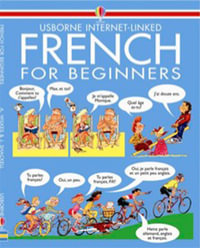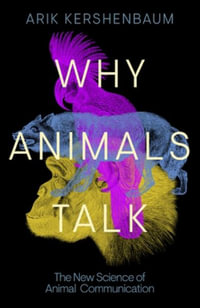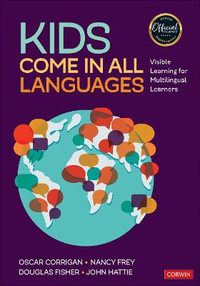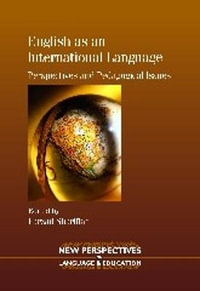| Figures | p. x |
| Tables | p. xii |
| Preface | p. xiii |
| Introducing Christopher | p. 1 |
| Personal background | p. 1 |
| Psychological profile | p. 2 |
| Medical background | p. 4 |
| Autism and perspective | p. 5 |
| Apraxia and the visuo-spatial | p. 6 |
| Theoretical background | p. 8 |
| Memory | p. 8 |
| Modularity and modality | p. 18 |
| The language faculty | p. 21 |
| Principles and parameters | p. 22 |
| Morphology as an interface | p. 24 |
| Theory of mind | p. 25 |
| False belief and the language faculty | p. 25 |
| Theory of intelligence and the executive | p. 27 |
| Central coherence | p. 29 |
| Relevance, and Christopher's pragmatic ability | p. 32 |
| Linguistic processing problems | p. 34 |
| L1A versus L2A | p. 36 |
| Christopher's English | p. 36 |
| Christopher's 'second' languages: lexicon-syntax asymmetry | p. 37 |
| Inhibition and weak central coherence | p. 38 |
| Summary and predictions | p. 40 |
| British Sign Language: An overview | p. 43 |
| Introduction | p. 43 |
| Sign languages as natural languages | p. 44 |
| Sign space | p. 47 |
| Phonology: the lexicon | p. 49 |
| Modality effects | p. 53 |
| Iconicity in the sign lexicon | p. 55 |
| A preliminary model | p. 58 |
| Morpho-syntax | p. 62 |
| Word-order and topicalisation | p. 62 |
| Negation, questions and facial action | p. 65 |
| Negation | p. 65 |
| Questions | p. 67 |
| Subject-object agreement | p. 68 |
| Classifiers and topographic space | p. 70 |
| Classifiers in spoken languages | p. 70 |
| Classifiers in signed languages | p. 71 |
| Parallels between classifiers in spoken and signed languages | p. 74 |
| Cross-modality effects: space, gesture and iconicity | p. 75 |
| Conclusions | p. 75 |
| The programme | p. 77 |
| Preliminaries | p. 77 |
| Methodology of data presentation and analysis | p. 77 |
| Iconicity | p. 78 |
| The curriculum and other interactions | p. 79 |
| Christopher and the comparator group | p. 80 |
| Rationale for the selection of BSL phenomena | p. 81 |
| Specific predictions about BSL learning in the two groups | p. 82 |
| The results | p. 84 |
| Introduction | p. 84 |
| Overview of Christopher's BSL learning | p. 84 |
| Non-verbal communication, gesture and iconicity | p. 86 |
| Lexical development | p. 92 |
| Morpho-syntax | p. 96 |
| Word-order | p. 96 |
| The face: negation and questions | p. 99 |
| Negation | p. 99 |
| Questions | p. 109 |
| Sign space and verb agreement | p. 115 |
| Classifiers | p. 122 |
| Further tests | p. 130 |
| Summary and conclusions | p. 137 |
| Christopher in the wider context | p. 140 |
| Introduction: dissociations revisited | p. 140 |
| Aphasic signers | p. 140 |
| Background: unimpaired signers | p. 140 |
| Signers with stroke | p. 141 |
| Sign versus gesture: Charles | p. 142 |
| Robert | p. 143 |
| Autistic signers | p. 145 |
| Heather | p. 146 |
| Bilingual twins with Down Syndrome | p. 149 |
| Daniel Tammet | p. 151 |
| Conclusions | p. 152 |
| Modality and the mind | p. 153 |
| Introduction | p. 153 |
| Modality effects | p. 153 |
| Articulation | p. 153 |
| Simultaneity (the non-concatenative nature of BSL) | p. 155 |
| Iconicity | p. 156 |
| Orthography | p. 156 |
| Deixis in English and BSL: apraxia revisited | p. 157 |
| Space, syntax and pragmatics | p. 159 |
| Classifiers revisited | p. 160 |
| Facial action, intonation and morpho-phonology | p. 161 |
| A model of the mind | p. 162 |
| The framework | p. 163 |
| Exemplification | p. 177 |
| Conclusions | p. 182 |
| Neuropsychology and linguistic talent | p. 182 |
| Modularity, modality and mind | p. 182 |
| Appendices | |
| Stroop tests | p. 185 |
| List of example signs used in vocabulary tests in comprehension and production | p. 190 |
| Notes | p. 191 |
| References | p. 197 |
| Index | p. 214 |
| Table of Contents provided by Ingram. All Rights Reserved. |
























